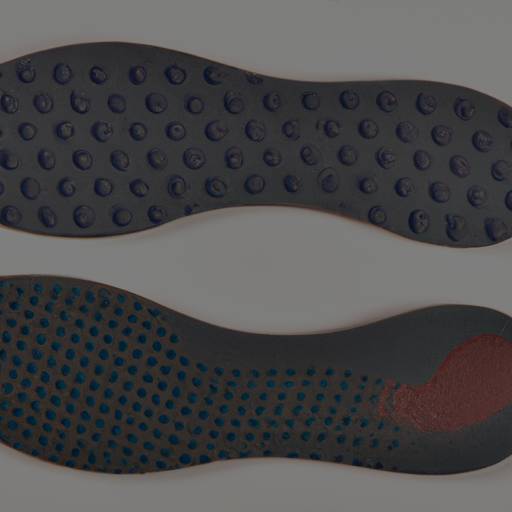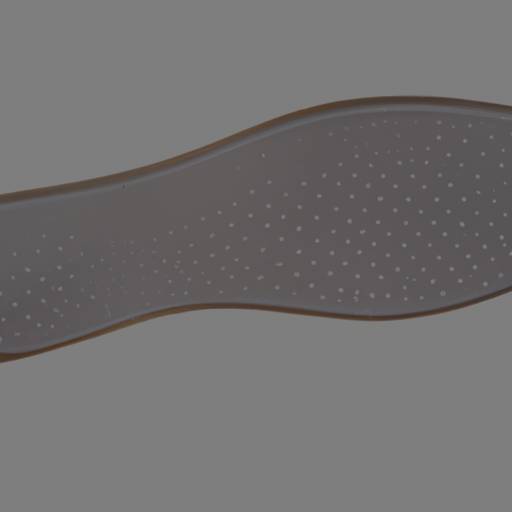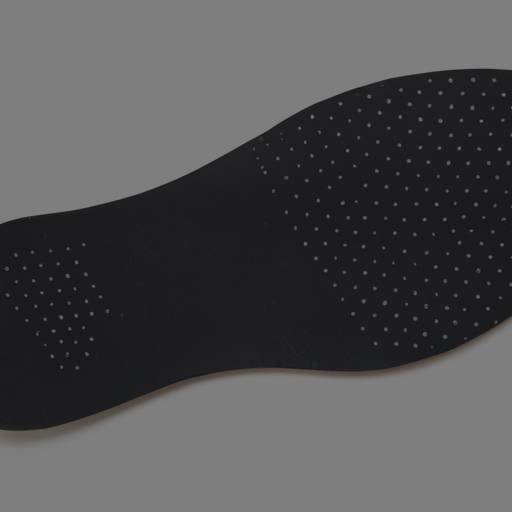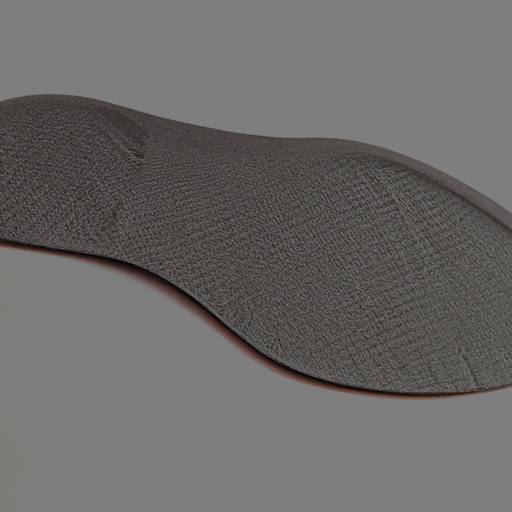Why Do My Orthotics Hurt My Arch? Finding Answers for Sore Feet
Understanding Orthotics and Arch Support
For individuals experiencing discomfort in their arches, understanding the role of orthotics and arch support is essential. This section will provide an overview of what orthotics are, the importance of arch support, and common reasons for sore feet.
What Are Orthotics?
Orthotics, also known as insoles or shoe inserts, are devices designed to provide additional support and cushioning to the feet. They are often used to address various foot conditions, such as flat feet, high arches, or plantar fasciitis. Orthotics can be purchased over-the-counter or customized to suit individual foot needs.
The Importance of Arch Support
Arch support is a crucial aspect of orthotics. The arch of the foot acts as a natural shock absorber, distributing the body’s weight evenly and maintaining proper foot alignment. However, some individuals may have high arches or flat feet, which can lead to imbalances and foot pain. Arch support provided by orthotics helps to alleviate discomfort and promote proper foot function.
Common Reasons for Sore Feet
Sore feet can arise for various reasons, even when using orthotics. Some common causes include:
- Improper Fit or Size: Ill-fitting orthotics can cause discomfort and arch pain. It’s important to ensure that the orthotics are the correct size and provide proper support to the arches of the feet. If the insoles are too loose or too tight, they may not effectively support the arches, leading to discomfort.
- Adjustment Period: When first using orthotics, it is common to experience an adjustment period. The feet may need time to adapt to the new support and alignment provided by the orthotics. During this period, it is normal to feel some discomfort or soreness in the arches. However, if the pain persists or worsens over time, it may indicate an issue that should be addressed.
- Lack of Customization: Generic orthotics may not address specific foot conditions or individual needs. Customized orthotics, which are tailored to the individual’s foot shape and arch type, can provide better support and alleviate discomfort. If over-the-counter orthotics are not providing sufficient relief, consulting a healthcare professional for custom orthotics may be beneficial.
Understanding the basics of orthotics and the importance of arch support can help individuals identify potential causes of arch pain and discomfort. In the next section, we will explore solutions for addressing arch pain associated with orthotics, such as seeking professional assessment and re-evaluating the design of the orthotics.
Potential Causes of Arch Pain with Orthotics
When wearing orthotics, it can be frustrating to experience arch pain. Understanding the potential causes can help you address and alleviate this discomfort. Here are three common reasons why your orthotics may be causing arch pain:
Improper Fit or Size
One of the primary reasons for arch pain with orthotics is an improper fit or size. If the orthotics are too small or too large for your feet, they may not provide the necessary support and alignment. Ill-fitting orthotics can create pressure points on your arches, leading to discomfort and pain.
To ensure a proper fit, it is essential to consult with a healthcare professional or podiatrist who can assess your feet and recommend the appropriate size and type of orthotics. Additionally, consider visiting our article on how to pick insoles to gather more information on selecting the right orthotics for your needs.
Adjustment Period
Orthotics often require an adjustment period for your feet to adapt to the new support and alignment. During this period, it is not uncommon to experience some discomfort, including arch pain. As your feet become accustomed to the orthotics, the pain should gradually decrease.
To help ease the transition, it is recommended to gradually increase the duration of wearing your orthotics each day. Start by wearing them for shorter periods and gradually extend the time as your feet adjust. Be patient and allow your feet time to adapt to the new support.
Lack of Customization
Orthotics that are not properly customized to your specific foot shape and arch type can contribute to arch pain. Lack of customization may result in inadequate support or improper alignment, causing discomfort in the arch area.
If you are experiencing arch pain with your orthotics, it’s worth considering consulting with a healthcare professional or podiatrist who can assess your feet and recommend custom orthotics tailored to your unique needs. Custom orthotics are designed to provide optimal support and alignment, potentially reducing arch pain.
By addressing these potential causes of arch pain with orthotics, you can take steps towards finding the right solutions. Remember to consult with a healthcare professional or podiatrist who can provide personalized guidance based on your specific foot structure and needs.
Solutions for Arch Pain with Orthotics
Experiencing arch pain when wearing orthotics can be frustrating and uncomfortable. However, there are several solutions that can help alleviate this discomfort and ensure a more positive experience with your orthotics. Here are some effective solutions to consider:
Seek Professional Assessment
If you’re experiencing persistent arch pain while wearing orthotics, it’s crucial to seek a professional assessment from a podiatrist or orthopedic specialist. They can evaluate your feet, assess the fit and alignment of your orthotics, and identify any underlying issues that may be causing the discomfort. This professional guidance will help determine the best course of action to address your specific needs.
Re-evaluate Orthotic Design
In some cases, the arch pain may be attributed to an improperly designed or fitted orthotic. It’s important to re-evaluate the design and fit of your orthotics to ensure they are providing adequate support and alignment for your feet. Consider consulting with a podiatrist or orthotics specialist to review the design and make any necessary adjustments. They may recommend different materials, shapes, or modifications to better suit your individual foot structure and alleviate the arch pain.
Gradual Break-in and Adjustment
Orthotics often require a break-in period for your feet to adjust to the new support and alignment they provide. It’s essential to give your feet time to adapt gradually. Start by wearing the orthotics for shorter periods and gradually increase the duration over time. This allows your feet to get accustomed to the changes and reduces the likelihood of experiencing discomfort or arch pain. If the pain persists, consult with a professional to ensure proper adjustment or modifications are made.
Remember, everyone’s feet are unique, and what works for one person may not work for another. It’s essential to find the right solutions for your specific needs. If you’re still experiencing arch pain even after trying these solutions, consult with a podiatrist or orthopedic specialist for further evaluation and guidance.
For more information on insoles, arch support, and foot pain, check out our related articles on best arch support insoles, memory foam insoles, and memory foam insole. Remember, finding the right support for your feet can make a significant difference in your overall comfort and well-being.
Additional Tips for Comfortable Arch Support
When it comes to providing comfortable arch support for your feet, there are a few additional tips that can enhance your overall experience. These tips include proper footwear selection, stretching and strengthening exercises, and regular maintenance and replacement of your orthotics.
Proper Footwear Selection
Choosing the right footwear is essential for optimal arch support. Look for shoes that provide adequate arch support and cushioning to complement your orthotics. It’s important to ensure that your shoes have enough room to accommodate the additional volume created by the orthotics. Consider shoe brands recommended by podiatrists, as they often prioritize supportive features. For more information on selecting the best footwear, check out our article on what shoe brands do podiatrists recommend.
Stretching and Strengthening Exercises
Incorporating stretching and strengthening exercises into your routine can help alleviate arch discomfort and improve the effectiveness of your orthotics. Focus on exercises that target the muscles and ligaments in your feet and calves. Simple stretches like toe curls, calf stretches, and arch lifts can promote flexibility and strength. Consult with a healthcare professional or physical therapist for personalized exercises that suit your specific needs.
Regular Maintenance and Replacement
To ensure continued comfort and support, it’s important to maintain and replace your orthotics regularly. Over time, the materials in orthotics can wear down, affecting their effectiveness and comfort. Follow the manufacturer’s guidelines for cleaning and maintaining your orthotics. Depending on the type and usage, orthotics typically need to be replaced every 1-2 years. Regularly assessing the condition of your orthotics and replacing them when necessary will help prevent discomfort and promote optimal arch support.
By incorporating these additional tips into your routine, you can enhance the comfort and effectiveness of your arch support orthotics. Remember, it’s important to consult with a healthcare professional or podiatrist for personalized advice based on your unique foot condition and needs.







